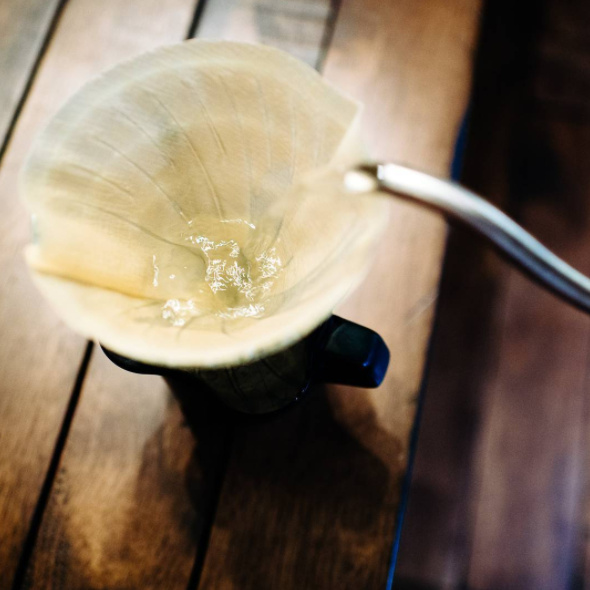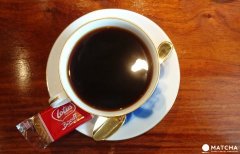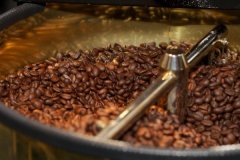How does hand coffee reduce the smell of filter paper? Wetting filter paper with hot water has an added benefit

Professional barista communication, please pay attention to coffee workshop (Weixin Official Accounts cafe_style)
Coffee conditioning equipment and conditioning methods vary widely, but when it comes to "ease of use,""low price," and "brewing quality," there are probably few that compare to hand-brewed coffee combined with filter cups and filters. However, users of filter cups and filter papers often face a small confusion: the same model filter cup, such as Hario V60, almost all have two different filter papers to choose from, one is unbleached tan filter paper, the other is bleached white filter paper, which one to choose? I would like to make a brief introduction so that readers can have a reference when choosing.
The raw material of filter paper is wood, wood after fine cutting, cooking and other processes, to obtain the initial pulp, then the pulp, regardless of color or smell are similar to the original wood, that is, close to the color of brown, and has a strong wood smell. If you take such pulp to make coffee filter paper, the color is still secondary, but the smell will inevitably affect the brewed coffee, so you must go through some processes to reduce the smell of the paper.
How to reduce paper odor? There are two main methods, the first is not bleaching, but increase the number of rinses, the second is to use chemicals to bleach the pulp, bleaching process at the same time eliminate most of the odor, further explained below.
Unbleached filter paper first. The smell of paper comes from lignin. To reduce the smell, the cheapest and most effective way is to use chemicals. On the one hand, bleach (white paper has many uses) and on the other hand eliminate most of the smell. However, chemicals will more or less harm the ecological environment, if you want to reduce the odor and reduce the use of chemicals, only in the manufacturing process to spend more time washing pulp, so the labor cost and time cost is higher than the use of chemicals, this is why the price of unbleached filter paper is usually higher.
Looking at bleaching filter paper, according to different bleaching processes, it can be divided into three categories:
Traditional bleaching filter paper
The traditional bleaching method uses chlorine, which is highly toxic. In the 1980s, the coffee industry was worried about its safety. Later, after research, it was found that there was no toxic residue, and there was no danger in brewing coffee with bleaching filter paper. However, the wastewater generated by chlorine in the process would seriously pollute the environment and pose a great threat to human health [Note 1]. At present, this kind of filter paper made by traditional bleaching method is rare in the market, but it is best to confirm before buying.
acid bleaching filter paper
That is, filter paper bleached with oxygen. The bleaching process uses mainly oxygen, hydrogen peroxide, ozone, sodium bicarbonate, chlorine dioxide, etc. This paper making process greatly reduces the harm to the environment (not completely) because it modifies the use of chlorine gas in the first stage of the traditional process. Although chlorine dioxide is still used, chlorine dioxide is a very good oxidant. It does not behave like chlorine in chemical reactions. Toxic chloride formed by substitution. Most of the bleaching filter papers on the market today belong to this kind, especially the products of well-known brands, such as Hario, Kono and the like.
enzyme bleaching filter paper
Enzymatic bleaching is a relatively new paper-making method, probably less than 20 years old. About this kind of bleaching filter paper, I also have many doubts myself. I once asked an old classmate who is familiar with paper making and served as a senior director in the largest pulp mill in China before retirement. According to him, there is no paper making factory in China that uses this new method at present. I only know that the general process is xylanase.(Enzymes) replace oxygen by centrifugation, screening, filtration, salting out, solvent precipitation, refiltration, spray drying, freeze drying, etc. to obtain enzyme extracts that can be used for bleaching, and then add them at the final stage of pulping. It is said that this method produces less harmful substances than acid bleaching. Unfortunately, there seems to be no trace of enzyme bleaching filter paper on the market in Taiwan. Although Hario V 60 filter paper known as enzyme bleaching is sold on the Internet, when asked about Hario's Taiwan agents, their answer is that all Hario bleaching filter papers are acid bleaching filter papers.

So, unbleached or bleached filter paper? If readers are confused, here's my advice:
Whether it is bleached or unbleached filter paper, there is no paper smell, the difference is only in the severity. In general, bleached filter paper has a light smell, but it is more harmful to the environment; unbleached filter paper is less harmful to the environment, but the paper smell is heavier. If you pay attention to the ecological environment, it is recommended to choose a large brand, high-quality unbleached filter paper; if you think coffee flavor is more important, then choose bleached filter paper, but only choose acid bleaching or enzyme bleaching filter paper, at least reduce the damage to the environment. In addition, before brewing coffee, fully wet filter paper, is also a good way to reduce paper flavor, especially unbleached filter paper, paper flavor reduction is particularly obvious. Wet filter paper with hot water has two additional benefits:
(1) Make the filter paper fit on the filter cup;
(2) By the way, warm the container below.
Regarding filter paper, there are actually some factors worth noting, such as texture, thickness, shape of filter paper, etc., which will affect the filtering effect and bring subtle differences to coffee, but the research in this area has not yet been conclusive, so this article has to stop here.
[Note 1] The bleaching process involves chlorination and alkali extraction, using a variety of chemicals such as hypochlorite, chlorine dioxide, oxygen, ozone, hydrogen peroxide, etc.; the resulting waste liquid contains AOX (adsorbable organic halogen), which is a chlorine-containing organic substance collectively known as "adsorptive organic halide". AOX is composed of benzene, benzol, phenol, catechol, chlorinated derivatives of guaiacol, etc. It can be divided into two categories: high molecular weight AOX and low molecular weight AOX. High molecular weight AOX is less likely to cause mutation due to its low biological activity and low toxicity, but low molecular weight AOX is easy to penetrate into cell membrane due to its small molecular weight and hydrophobicity, which is the main cause of gene mutation and bioaccumulation. Aquatic organisms living in the upper part of the aquatic food chain will accumulate higher amounts in body fat. In addition, the toxicity of various chlorinated derivatives varies, for example, exposure to 60 ppm chlorobenzene may cause headaches, eye inflammation, throat ulcers and other symptoms. Chronic exposure to chlorobenzenes has been shown to cause lung disease, kidney dysfunction and porphyria. Chlorobenzene affects the central nervous system, causing dizziness, hypersensitivity and muscle spasms. Hexachlorobenzene is known to have carcinogenic potential through animal tests.
[Note 2] Oxygen, which the Japanese call acid. Chinese says "oxidation," Japanese is called "acidification," because oxidation will produce acidic substances, this is the Japanese understanding of oxygen. Taiwan and Japan have a long history, and many things have the same name."Acid bleaching" is one example.
Important Notice :
前街咖啡 FrontStreet Coffee has moved to new addredd:
FrontStreet Coffee Address: 315,Donghua East Road,GuangZhou
Tel:020 38364473
- Prev

Myth: Caffeine is not addictive, instant coffee is addictive
Weixin Official Accounts cafe_style Recent studies have shown that drinking too much coffee may increase the risk of high blood pressure; there are also studies showing that coffee can prevent diseases such as diabetes or dementia
- Next

Fresh roasting of coffee beans is so important! Simply try to find out whether the coffee beans are fresh or not.
Communication among professional baristas follow the coffee workshop (official Wechat account cafe_style) Meana is one of many people who are used to refreshing themselves with a cup of strong coffee in the morning. Although coffee is a daily necessity, it seems that I am a poor man who has the money to go to Starbucks every day to help me, so I have no choice but to make my own coffee and save some money. Make your own coffee, someone
Related
- Beginners will see the "Coffee pull flower" guide!
- What is the difference between ice blog purified milk and ordinary milk coffee?
- Why is the Philippines the largest producer of crops in Liberia?
- For coffee extraction, should the fine powder be retained?
- How does extracted espresso fill pressed powder? How much strength does it take to press the powder?
- How to make jasmine cold extract coffee? Is the jasmine + latte good?
- Will this little toy really make the coffee taste better? How does Lily Drip affect coffee extraction?
- Will the action of slapping the filter cup also affect coffee extraction?
- What's the difference between powder-to-water ratio and powder-to-liquid ratio?
- What is the Ethiopian local species? What does it have to do with Heirloom native species?

